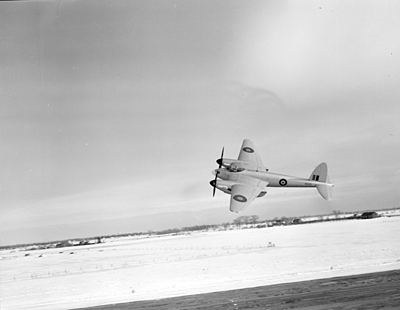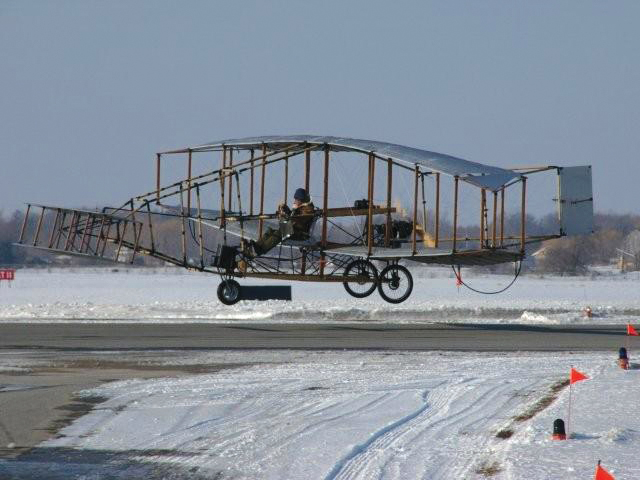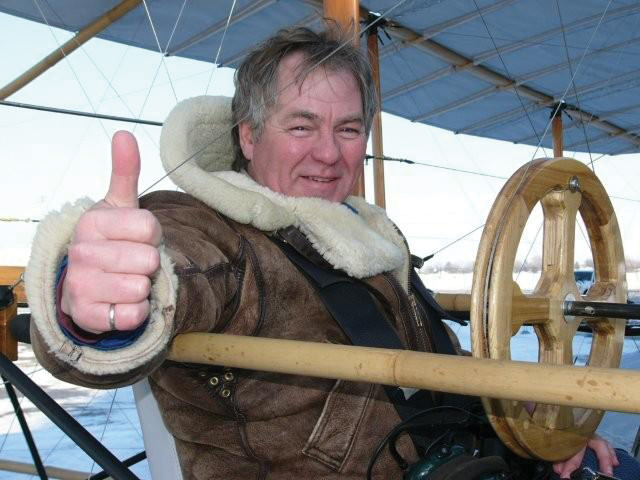
News
100 Years of Powered Flight
It is surprising how an unconventional but inspired design of an
aircraft can end up taking the aviation world by storm.
March 23, 2009 By Wings Magazine
It is surprising how an unconventional but inspired design of an aircraft can end up taking the aviation world by storm. The de Havilland Mosquito or “Mossie,” as it was affectionately called, was one these because of the large amount of wood used in its construction.
 |
|
| The de Havilland Mosquito. (Photo courtesy of the Alan Gifford collection, Canadian Air and Space Museum). |
The Mossie did not have a really long gestation period, perhaps because of de Havilland’s previous experience with wood with the D.H.91 Albatross (what a name for an aircraft!) The first attempt to turn the D.H. 91 into a bomber aircraft was a disaster; it was far too heavy. The next attempt was much more successful in that the designers opted to reduce weight even to the point of removing all defensive armament; a decision that irked some diehards in the Air Ministry who would have installed a howitzer if they thought nobody was looking.
But speed won out; the Mosquito could outrun all existing enemy fighters. That still wasn’t enough to start production but, when World War II broke out, priorities changed and an order was placed for 50 examples. That was only the beginning!
The RAF soon decided that they were interested in both fighter and reconnaissance versions of the Mossie and what they finally got exceeded their expectations. The fighter could outrun the current Spitfire; the bomber could carry a much heavier load than expected. From then on, as far as the RAF was concerned, it was a winner.
The Canadian content of this remarkable aircraft was threefold. First of all, part of the wooden construction was made up of Canadian birch. Secondly, a goodly number of Canadian aircrew flew the aircraft in combat and finally some of the production was transferred to Canada. The exact number produced at the de Havilland factory, that was located at what is today known as Downsview, varies from source to source but was roughly 1,150, many of which were ferried to Great Britain.
In this respect there were problems with the aircraft. Carl Christie, in his definitive book “Ocean Bridge,” the story of Ferry Command in World War II, reports that a special unit was set up at Crumlin Airport, London, Ont. (now the London International Aiport, CYXU) to get the aircraft and aircrew ready for the long overseas trip. Pilots were required to spend at least five hours in the plane they were to ferry to England. One pilot reportedly found his aircraft spread all over the hangar floor. On inquiring the reason for this, he was told: “If we are going to service these aircraft, we might as well find out what makes them tick.”
Before the war ended, the Mosquito was used in any manner of missions. The nearest German equivalent was the Ju.-88 but the Mossie could outrun this versatile aircraft with ease. Only when the German jets came into action did it meet its match with regards to speed.
So important was the Mosquito that it remained in service after the end of the war in 1945. It then formed the basis for an advanced version – the Hornet, that also flew as a naval fighter from aircraft carriers. It saw effective service in the civil war in Malaysia before it, too, was phased out in the mid-1950s.
There is no doubt that the Mosquito, the “Wooden Wonder,” is considered as one of the most outstanding aircraft of its era.
By Raymond Canon.
FIRST FLIGHT OF THE SILVER DART REPLICA
 |
 |
||
| The Silver Dart flew for 3,000 ft., reaching a maximum altitude of approximately 10 ft.
|
Bjarni Tryggvason, Canadian astronaut, aerobatic pilot and professor of aerodynamics at the University of Western Ontario flew the Silver Dart. (Photograph courtesy of Kevin Psutka, COPA) |
The first flight of the Silver Dart Replica took place at the Hamilton Airport on Feb. 6, 2009.
There were some taxi tests during which the main wheels got airborne, then back to the hangar for some calculations and Centre of Gravity adjustments and then several runs down the runway with flights of distances up to 3000 feet and up to 10 feet off the ground. The Silver Dart appeared quite stable in flight.
Bjarni Tryggvason’s thumbs-up says it all.
Scheduled to fly again on Feb. 23 from Baddeck, Nova Scotia, the flight of the Silver Dart replica was cancelled due to poor weather conditions. A tricky crosswind and a fresh dumping of snow over the Maritimes forced the cancellation of the recreation of the first flight in Canada of the Silver Dart, an historic event that took place 100 years ago on Feb. 23, 1909, on a frozen lake in Cape Breton.
Click here to get the latest news and to be a part of the celebration!
TEST YOUR KNOWLEDGE: Canadian Aviation Quiz